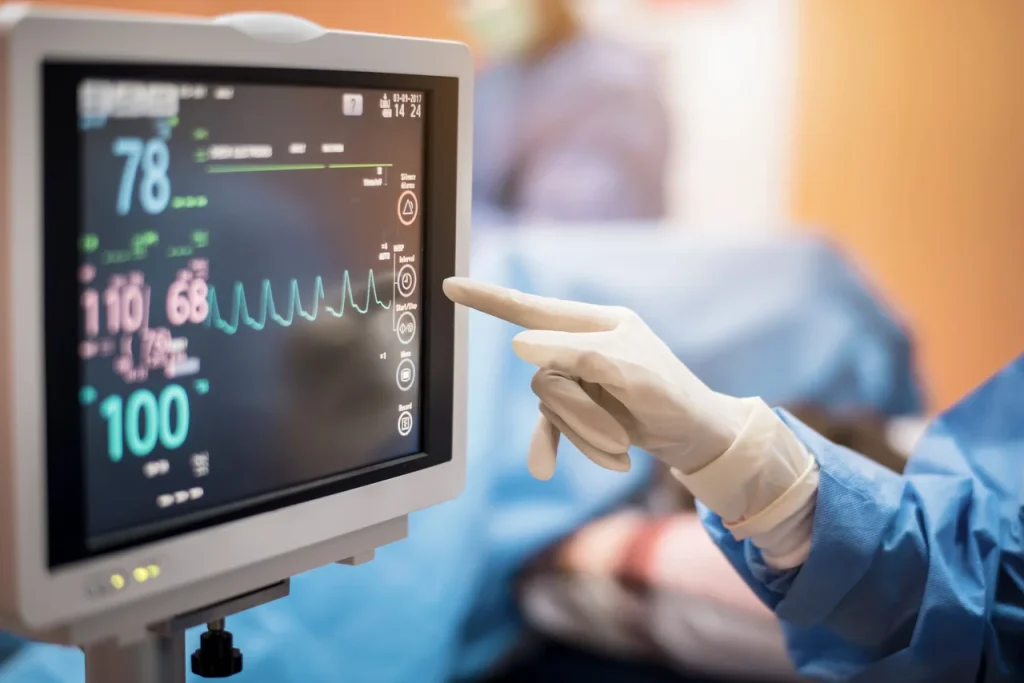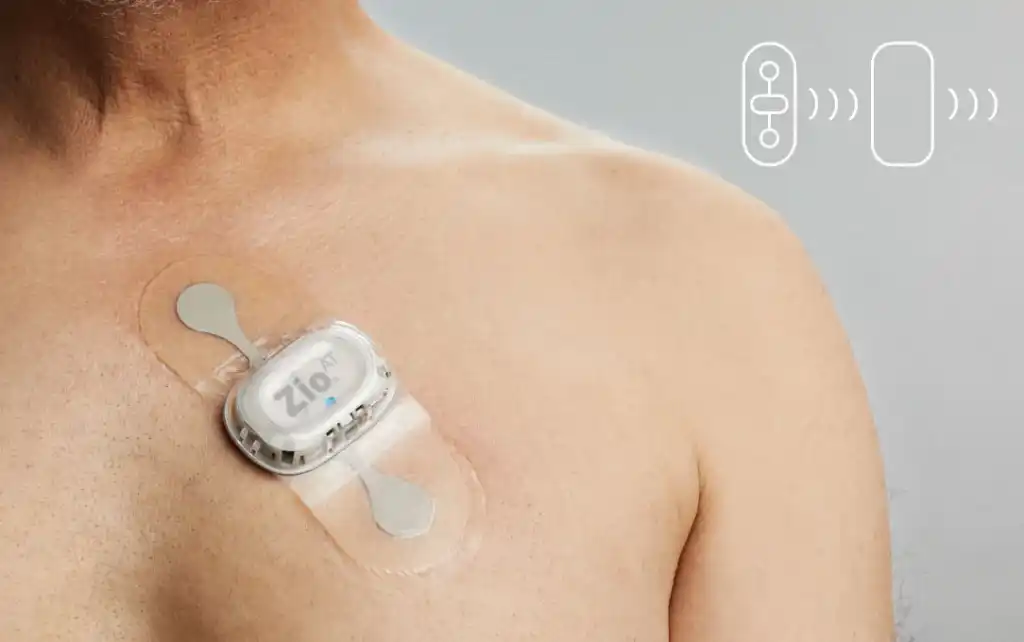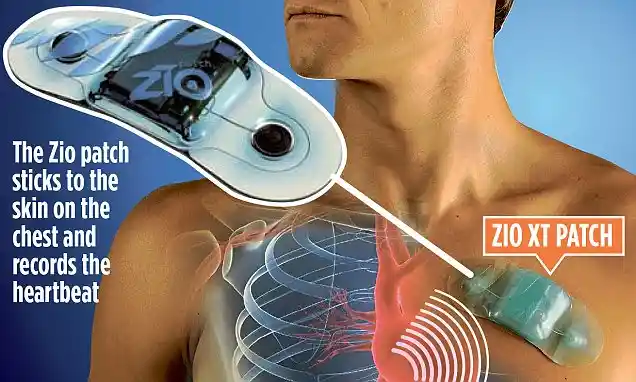The Zio heart monitor is a revolutionary device designed to detect and track irregular heart rhythms. It is widely used by healthcare professionals to diagnose and monitor conditions such as atrial fibrillation (AFib), bradycardia, and other arrhythmias. Unlike traditional Holter monitors, the Zio monitor offers continuous cardiac monitoring for an extended period, providing more accurate data for diagnosis.
What is a Zio Heart Monitor?
The Zio heart monitor, developed by iRhythm Technologies, is a small, lightweight, and discreet device that adheres to the patient’s chest. It records heart activity continuously, typically for up to 14 days, though some models offer extended monitoring periods. The device eliminates the need for wires and bulky equipment, making it a convenient option for patients who require long-term cardiac monitoring.
How Does the Zio Heart Monitor Work?
The Zio monitor works by continuously recording electrocardiogram (ECG) data while the patient goes about their daily activities. It detects irregular heart rhythms, skipped beats, and other anomalies that may indicate underlying heart conditions.

The collected data is then analyzed using advanced algorithms and reviewed by medical professionals to determine the presence of arrhythmias or other cardiac issues.
Features and Benefits of the Zio Heart Monitor
- Extended Monitoring Period – Unlike Holter monitors that record for only 24-48 hours, the Zio monitor can track heart activity for up to 14 days or longer, increasing the chances of detecting irregularities.
- Compact and Comfortable Design – The Zio monitor is small, lightweight, and designed for patient comfort. It is water-resistant and can be worn during most daily activities, including showering.
- Wireless and Adhesive-Based – The device sticks to the skin without requiring wires or additional components, making it less intrusive and easier to wear.
- High Diagnostic Yield – Due to its prolonged monitoring period, the Zio monitor has a higher likelihood of detecting intermittent arrhythmias compared to traditional short-term monitoring devices.
- Automated Data Analysis – The device utilizes machine learning and AI-driven algorithms to process vast amounts of ECG data, helping physicians identify potential issues more accurately and efficiently.
- Patient-Activated Event Marking – Users can press a button when they experience symptoms, allowing doctors to correlate subjective experiences with ECG data.
- No Interference with Daily Activities – The device allows patients to continue normal daily activities, making it more practical for long-term monitoring without disrupting routines.
- Lower Risk of False Negatives – Due to continuous monitoring, the likelihood of missing abnormal heart rhythms is significantly reduced compared to traditional monitoring systems.
Who Needs a Zio Heart Monitor?
The Zio heart monitor is recommended for patients experiencing symptoms such as:

- Palpitations or irregular heartbeats
- Dizziness or lightheadedness
- Fainting spells (syncope)
- Chest pain
- Shortness of breath
- Unexplained fatigue
Doctors may also prescribe the Zio monitor for individuals at risk of developing arrhythmias due to underlying heart conditions, post-stroke monitoring, or assessing the effectiveness of certain cardiac treatments.
How to Use the Zio Heart Monitor
- Application – The monitor is placed on the chest by a healthcare professional or the patient, ensuring it adheres properly.
- Wearing the Device – Patients should continue with their normal activities while wearing the device. They are advised to avoid excessive water exposure, though showering is typically allowed.
- Recording Symptoms – If a patient experiences symptoms, they can press the device button or log their experiences in a provided diary or mobile app.
- Completion of Monitoring – Once the monitoring period ends, the patient removes the device and returns it to iRhythm Technologies for analysis.
- Data Analysis and Diagnosis – The collected data is reviewed by specialists who generate a detailed report for the prescribing physician.
Comparing Zio Monitor with Other Heart Monitoring Devices
| Feature | Zio Heart Monitor | Holter Monitor | Event Monitor |
| Monitoring Duration | 14 days or more | 24-48 hours | Up to 30 days |
| Wires | No | Yes | Yes |
| Patient Comfort | High | Low | Moderate |
| Data Analysis | AI-driven | Manual | Manual |
| Waterproof | Yes (limited) | No | No |
Accuracy and Reliability of the Zio Heart Monitor
Clinical studies indicate that the Zio heart monitor provides higher diagnostic yield compared to Holter monitors due to its extended recording period. It captures intermittent arrhythmias that might be missed in shorter monitoring periods. The AI-assisted analysis further enhances accuracy, reducing false positives and improving the efficiency of diagnosing heart conditions.
Cost and Insurance Coverage
The cost of the Zio heart monitor varies based on healthcare providers and insurance plans. Many insurance companies cover the device, especially when prescribed for legitimate medical reasons. Patients should check with their insurance providers for specific coverage details and out-of-pocket costs.
Potential Limitations and Considerations
- Adhesive Sensitivity – Some patients may experience skin irritation from the adhesive used to attach the device.
- Limited Real-Time Feedback – Unlike traditional event monitors, the Zio device does not provide real-time alerts for detected abnormalities.
- Data Processing Time – After the monitoring period, it takes a few days to process the data and generate a report.
- Not Suitable for All Patients – Patients with severe cardiac conditions that require immediate intervention may need other real-time monitoring solutions.
The Future of Cardiac Monitoring with Zio Technology
As healthcare technology advances, the Zio heart monitor continues to evolve. Researchers are working on improving the AI algorithms that analyze ECG data, making it even more efficient in detecting abnormalities. Future versions of the Zio monitor may incorporate real-time alerts and better adhesive materials to improve patient comfort. Additionally, expanded remote monitoring capabilities could allow physicians to access data in real time, leading to faster interventions when necessary.

The demand for non-invasive and long-term monitoring solutions is growing, and the Zio heart monitor is at the forefront of this innovation. With continued research and development, it has the potential to revolutionize how heart conditions are diagnosed and managed globally. More clinical trials are being conducted to enhance its effectiveness and validate its use in broader medical applications.
With its increasing adoption in hospitals and clinics, the Zio heart monitor is paving the way for a future where heart health monitoring is more accessible, accurate, and patient-friendly. Ongoing advancements will likely introduce even more features, making it an essential tool in modern cardiology.
Read More: Race Monitor





